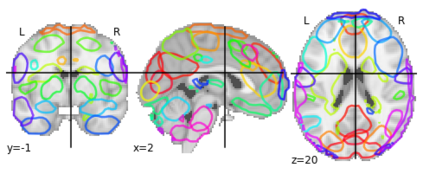Graphs are the most ubiquitous data structures for representing relational datasets and performing inferences in them. They model, however, only pairwise relations between nodes and are not designed for encoding the higher-order relations. This drawback is mitigated by hypergraphs, in which an edge can connect an arbitrary number of nodes. Most hypergraph learning approaches convert the hypergraph structure to that of a graph and then deploy existing geometric deep learning methods. This transformation leads to information loss, and sub-optimal exploitation of the hypergraph's expressive power. We present HyperMSG, a novel hypergraph learning framework that uses a modular two-level neural message passing strategy to accurately and efficiently propagate information within each hyperedge and across the hyperedges. HyperMSG adapts to the data and task by learning an attention weight associated with each node's degree centrality. Such a mechanism quantifies both local and global importance of a node, capturing the structural properties of a hypergraph. HyperMSG is inductive, allowing inference on previously unseen nodes. Further, it is robust and outperforms state-of-the-art hypergraph learning methods on a wide range of tasks and datasets. Finally, we demonstrate the effectiveness of HyperMSG in learning multimodal relations through detailed experimentation on a challenging multimedia dataset.
翻译:图表是代表关系数据集和在它们中进行推断的最普遍的数据结构。 但是,它们建模的是节点之间的对称关系,而没有设计为对更高级关系进行编码。 这种偏差会通过高测法得到缓解, 高测法可以将任意数目的节点连接起来。 大多数高测法将高测法结构转换成图形结构, 然后部署现有的深深深测法。 这种转换导致信息丢失, 并次优利用高测法的表达力。 我们展示了超超测MSG, 这是一种新型高测法学习框架, 它使用模块化的双级神经传递战略来准确和有效地在每个高端和高端之间传播信息。 超测制MSG通过学习与每个节点的高度中心相关的关注权重来适应数据和任务。 这种机制将节点的局部和全球重要性进行量化, 捕捉高测高测的结构性特性。 超测制MSG是入的, 允许对先前的可见节点作出推论。 此外, 它在每一个高端和高端的超导度数据实验中, 展示了高超导的超导法, 演示了我们的高级数据系统- 学习的高级系统。

















